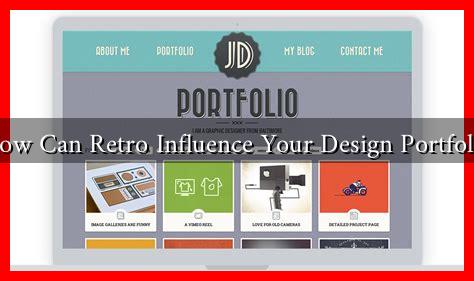-
Table of Contents
How Can Retro Influence Your Design Portfolio
In the ever-evolving world of design, trends come and go, but the allure of retro aesthetics remains timeless. Retro design, characterized by its nostalgic elements from past decades, can significantly enhance your design portfolio. This article explores how incorporating retro influences can elevate your work, attract clients, and set you apart in a competitive market.
The Power of Nostalgia in Design
Nostalgia is a powerful emotion that can evoke feelings of comfort and familiarity. According to a study published in the journal *Psychological Science*, nostalgia can enhance mood and increase feelings of social connectedness. By tapping into this emotional response, designers can create work that resonates deeply with audiences.
Why Retro Design Matters
Retro design is not just about mimicking styles from the past; it’s about understanding the cultural context and emotional resonance behind those styles. Here are some reasons why retro design is significant:
- Timeless Appeal: Retro designs often have a classic quality that transcends trends, making them relevant over time.
- Unique Identity: Incorporating retro elements can help your portfolio stand out, showcasing your unique design voice.
- Emotional Connection: Retro designs can evoke nostalgia, creating a deeper connection with your audience.
Incorporating Retro Elements into Your Portfolio
Integrating retro influences into your design portfolio can be done in various ways. Here are some effective strategies:
- Color Palettes: Use color schemes that were popular in past decades, such as pastel colors from the 1950s or bold, vibrant hues from the 1980s.
- Typography: Experiment with vintage fonts that reflect the era you are inspired by. For instance, using Art Deco fonts can evoke the glamour of the 1920s.
- Patterns and Textures: Incorporate retro patterns, such as polka dots or geometric shapes, to add visual interest to your designs.
- Imagery: Use vintage photographs or illustrations to create a nostalgic feel in your projects.
Case Studies: Successful Retro Design Portfolios
Several designers have successfully integrated retro influences into their portfolios, demonstrating the effectiveness of this approach:
- Jessica Walsh: Known for her bold use of color and typography, Walsh often incorporates retro elements into her work, creating a unique blend of modern and vintage aesthetics.
- David Carson: A pioneer in graphic design, Carson’s work often features chaotic layouts and retro typography, challenging conventional design norms and creating a distinct style.
- Paula Scher: As a partner at Pentagram, Scher’s use of retro-inspired graphics and typography has made her work iconic, showcasing the power of nostalgia in design.
Statistics on Retro Design Trends
Understanding the market trends can help you make informed decisions about incorporating retro elements into your portfolio. Here are some relevant statistics:
- According to a survey by Adobe, 61% of designers believe that retro styles are making a comeback in modern design.
- A report from the Design Management Institute found that companies that prioritize design outperform their competitors by 228% over ten years, highlighting the importance of a well-curated design portfolio.
Conclusion: Embrace the Retro Revolution
Incorporating retro influences into your design portfolio can provide a unique edge in a crowded marketplace. By leveraging the emotional power of nostalgia, utilizing vintage aesthetics, and studying successful case studies, you can create a portfolio that not only showcases your skills but also resonates with clients and audiences alike. As design trends continue to evolve, embracing retro elements can help you stay relevant and memorable in the ever-changing landscape of design.
For further reading on the impact of nostalgia in design, check out this insightful article on Smashing Magazine.

